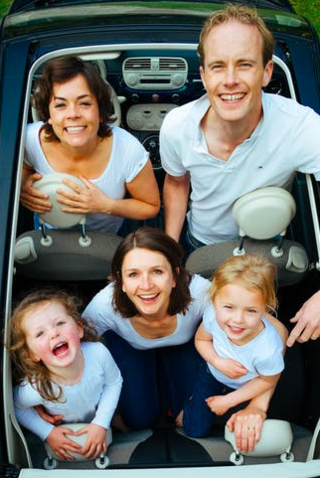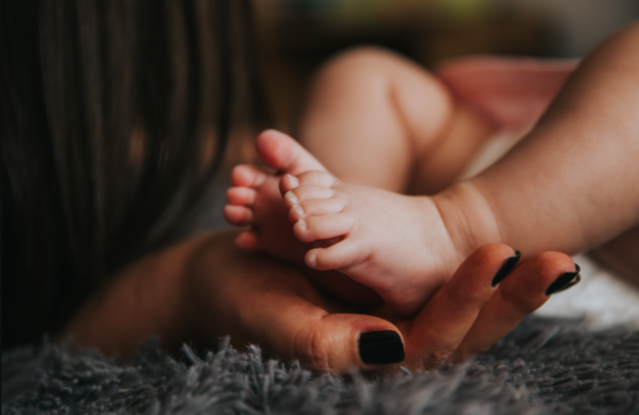
Adoption
Fears and Consequence in Choosing Open Adoption
Common myths and misconceptions.
Posted December 11, 2017
Myths & Misconceptions
If the birth mother is in our lives, my child will be confused as to who their "real" parents are.
The adoptive parent takes on the role of mom or dad from the very beginning. Because the birth mother has had a specific role in the child’s life, they see her as something like an extended relative, not as a parent. They aren’t forced to fill in the gaps with their imagination, and since they never experienced their birth mother as a parenting figure, there isn’t any confusion as to who the “real” parents are. Moreover, through interactions with their birth mother, they see her deferring to their mom or dad as the parent. Longitudinal studies continue to confirm that children of open adoption are actually less likely to be confused as to who their real parents are than children raised in closed adoptions. *

It will feel like shared-parenting.
The birth mother sees herself as an extended relative of your family. The child calls her by her first name, it is not shared parenting. On average, birth mothers visit with the adoptive family about once or twice a year, depending on distance. They also might talk or video chat or email updates and pictures a few times a year.
Some have compared it to how people often conceive of their in-laws. A spouse maintains relationships with his or her in-laws because they realize that they are an important part of who their spouse is. In open adoption, the adoptive family and birth family make a commitment to stay in contact because they also realize that the birth family is an important part of who the child is. As with in-laws, relationships vary. Some open adoption relationships develop into friendships while others are more distantly involved. All, however, recognize that they are family to one another, and important in the life of the child.

Are visits with the birth mother supervised?
No, the time the birth mother spends with the adoptive family is just like visiting with any other extended relatives. The birth mother also sees the adoptive parents as relatives, so she doesn’t pick the child up and take them away for the day, the visit allows the birthmother and the adoptive parents to all spend time together.
What if they run away to be with her?
When children are placed as infants, they do not have a parental attachment to their birth mother. They also don’t have to fantasize about what her life is like. If a child is going to try and run away, they are equally likely to run away to an aunt, their birth mother, or their friend’s house. Any adult in your life would notify you that your child has shown up at their door. Birth parents see themselves as an ally of yours, and for the open adoption relationship to work, the child needs to see the birth mother and parents on the same “team”.
Birth mothers choose to place, so the grief isn’t that bad.
Even though the choice is made voluntarily, it doesn’t mean that birth mothers do not want their children. They created this child inside of them and already love their child tremendously before they are even born. The truth is that birth parents have such a strong love for their child, the choice of adoption is selfless. One of my favorite adoption quotes is “A birth mother puts the needs of her child above the wants of her heart.” Skye Hardwick
Placing a baby for adoption is a legitimate loss. Even though they chose this path, it doesn’t make the grief less real, and they deserve the space and support to heal in a healthy way.

While openness does not eliminate the grief process, it has allowed birth parents to heal in a much healthier way. They no longer have to spend the rest of their lives scanning faces in crowds, wondering if the child they said goodbye to years before could be among them. Being a "birth parent" can be integrated as part of their identity in a way that instills pride in their decision. Moreover, their relationship with the adoptive family puts their minds at ease. Because they have a presence in the adoptive family's life, they are at peace with the fact that their birth child will not struggle with abandonment issues as they grow up.
If the birth mother has a relationship with my child, won't she want him back later on when she’s ready to be a parent?
Women who choose to become birth mothers are inherently selfless. They make a voluntary decision to go through immense pain for the benefit of their child. This is not congruent with the type of person who would devastate a child by taking them away from the only parents they have ever known. Accordingly, although the birth mother may look back one day and regret her life circumstances at the time she gave birth, given the place she was in, she can have the confidence that she made the decision in the best interest of her child. Furthermore, the opportunity to see how happy her child is reinforces birth mothers that their child is having the life they wanted for him or her.
Ultimately, both adoptive parents and birth parents choose openness to ensure that their child has the best chance to grow up with a strong sense of self and confident in who they are.
Birth parents make the choice to place under difficult circumstances and put their child’s wellbeing above all else. Adoptive parents choose openness so their child knows firsthand how much love went into that decision. Keeping the child’s best interest at the forefront of everyone’s minds throughout the adoption will help preserve the love and gratitude that brought everyone together that very first day.

References
*Siegel, D., & Smith, S. L. (2012). Openness in Adoption. From Secrecy and Stigma to Knowledge and Connections. New York, NY: Evan B. Donaldson Adoption Institute.



